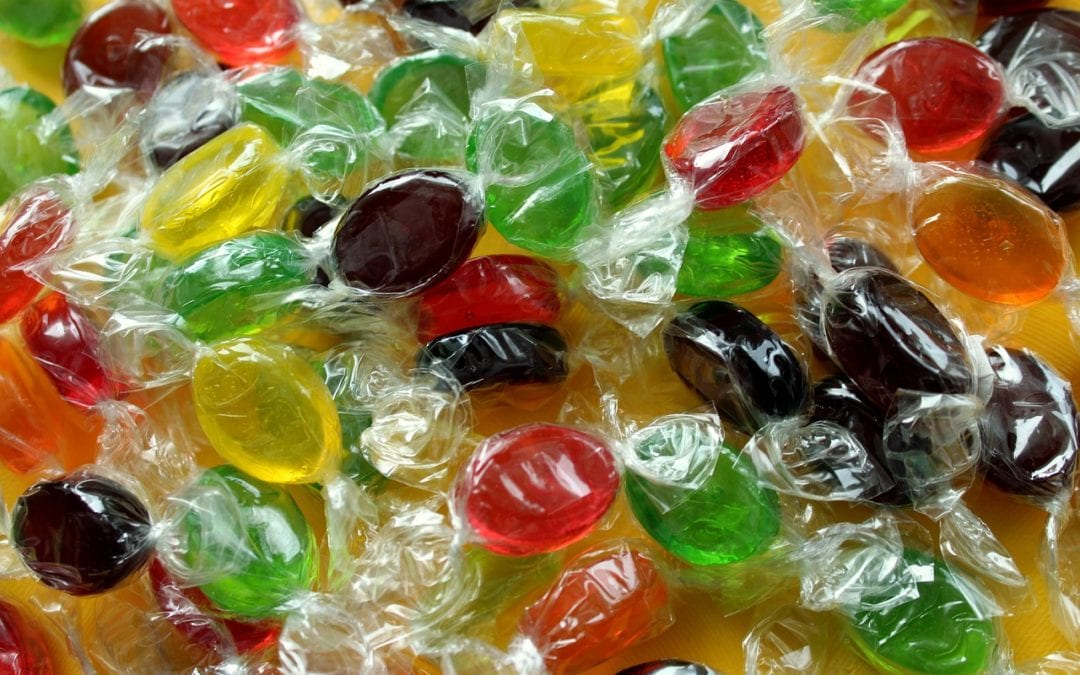Most pet owners are aware that chocolate and grapes are not good for doggies. We frequently get calls from aware pet owners “My lab ate one Hershey’s Kiss” which luckily is well below the toxic dose. You can learn more about the dangers of chocolate for pets here. Very few people are aware of xylitol as a very dangerous toxin for dogs. Xylitol is a sugar alcohol which has rapidly been gaining popularity as an artificial sweetener in sugarless gum, candy, throat lozenges, chewable vitamins, toothpaste, protein powder and baking sugar substitute. It is present in numerous everyday products. This sweetener is safe for humans but extremely dangerous to dogs.
When a dog ingests xylitol, their insulin level rises and their blood sugar level drops to dangerously low levels. The low blood sugar causes weakness and disorientation. The pet-owner may notice that their dog seems drunk or dizzy. If it is very severe it can lead to seizures, coma and death. Dogs that have ingested xylitol may experience vomiting and diarrhea. Xylitol can cause liver failure, which is often fatal. The effects of xylitol stay in a dog’s system for several days, requiring prolonged hospitalization.
How much xylitol is dangerous? A surprisingly small dose is toxic. Most gums that have xylitol listed as the main sweetener contain about 1 gram of xylitol per stick. At a dose of 0.1 gram per kilogram dogs can experience dangerously low blood sugar levels. This is about 1 stick of gum for a small dog, such as a Bichon. At a dose of 0.5 gram per kilogram dogs are a risk for liver toxicity. A Labrador eating just one pack of gum would be a high risk for liver failure.
Treatment can often be successful with very prompt treatment. If you think your dog has ingested xylitol, call your veterinarian right away. Xylitol in candy is rapidly absorbed and can cause toxicity in as little as 30 minutes. With gum there is a little more time since the xylitol needs to be absorbed from the gum. Often, much of the xylitol can be removed from the body by inducing vomiting and preventing the toxicity. Dogs that have ingested a toxic dose of xylitol need to be hospitalized for days while they are monitored and treated for low blood sugar and liver failure. Awareness and prevention are the best measure for this toxin since liver failure is not always survivable.

